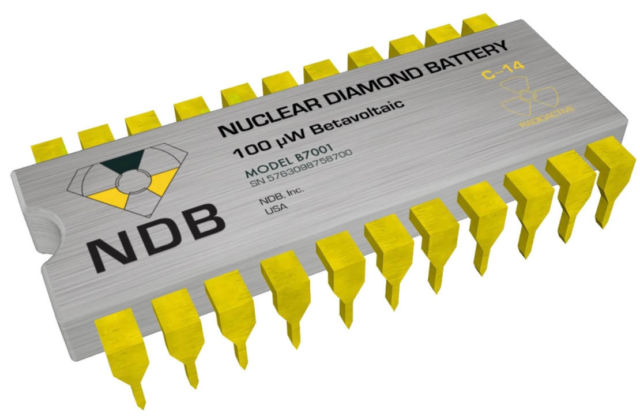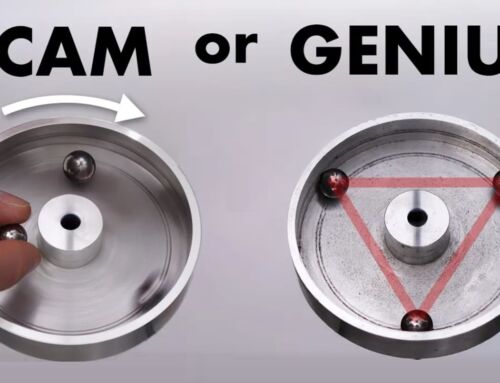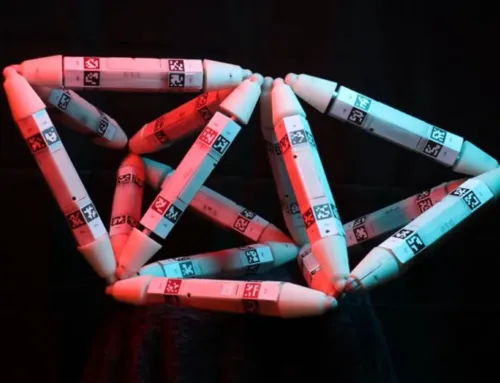Nano Diamond is a new type of battery that doesn’t run out in a single user’s lifetime, that defies the nature of what a battery is meant to be.
Nano Diamond (NDB) is a battery that harvests electricity from electrons and keeps doing so for thousands of years.
It is a green battery made from recycled intermediate, carbon-14 waste, using nanotechnology that does not run out devices lifetime and it even breaks down into harmless by-products.
Above: Nano Diamond Battery in a small circuit board mounted design. Credit NDB
Carbon-14 waste is a problem. It is environmentally unfriendly, and worst of all, it doesn’t just go away. It stays for thousands of years.
The converted carbon-14 waste turns into harmless by-products. So NDB is effectively denuclearising the nuclear waste safely.
Not only that, because the base material of the diamond battery is diamond. The hardest material on the planet.
The new battery is designed to power applications that are useful to us, like smartphones and electric vehicles.
The NDB is:
4,156 times more energy-dense than gasoline.
56,966 times more energy-dense than electrochemical batteries such as 2170 and 18650 battery.
– 100s of years of lifetime
– Safe and almost unbreakable
– Tiny & modular, can be sized to any device
Dr. John Shawe-Taylor, UNESCO Chair and University College London Professor, said:
“NDB has the potential to solve the major global issue of carbon emissions in one stroke without the expensive infrastructure projects, energy transportation costs, or negative environmental impacts associated with alternate solutions such as carbon capture at fossil fuel power stations, hydroelectric plants, turbines, or nuclear power stations. Their technology’s ability to deliver energy over very long periods of time without the need for recharging, refueling, or servicing puts them in an ideal position to tackle the world’s energy requirements through a distributed solution with close to zero environmental impact and energy transportation costs.”
sources NDB, Futurism.com






Leave A Comment